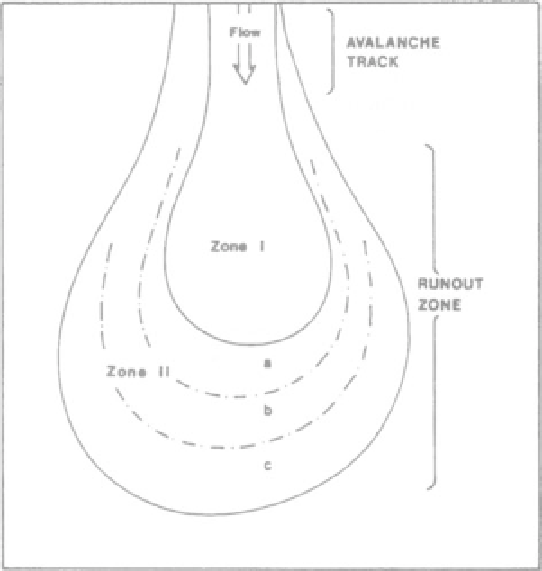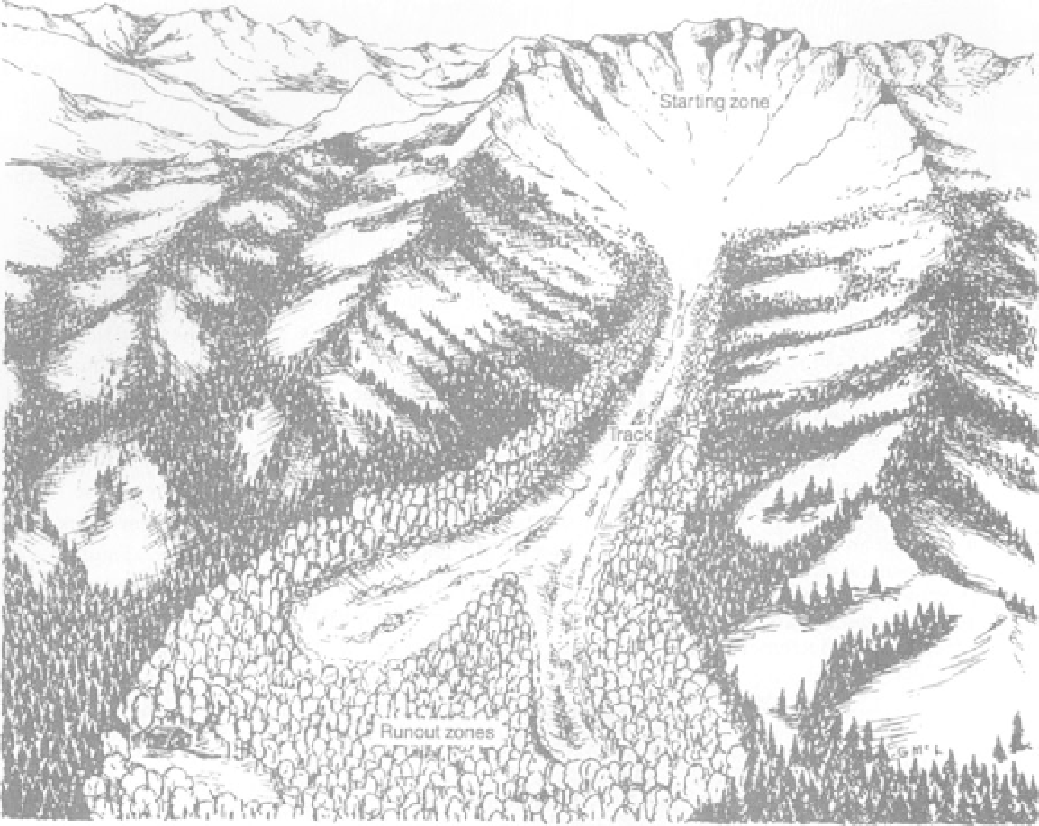Geology Reference
In-Depth Information
FIGURE 8.25
Large avalanche path showing various features. The smaller runout zone, reached more frequently, is cut through the
aspen forest. The larger zone is reached much less frequently, is revegetated by aspen, and must be considered in planning any devel-
opment (Mears, 1976; after Salm, 1975).
FIGURE 8.26
Comparison of an unconfined avalanche path
(A) and a confined avalanche path (B). In path A, the runout dis-
tance, S, is not affected by the width of the starting zone
because concentration of discharge does not occur at (a) and
(b). In path B all the released snow is conveyed through the con-
fined track at (a) and (b). Therefore, the runout distance, S, in
path B depends on the size of the starting zone (Mears, 1976,
after Salm, 1975).
FIGURE 8.27
Runout zones of an avalanche path. Zone I is high
hazard affected by avalanches with either short return periods or
large impact pressures. Zone II is affected by both longer return
periods and lesser impact pressures than Zone
I.
Hazard level
decreases toward the outer margin of Zone II (Mears, 1976).



